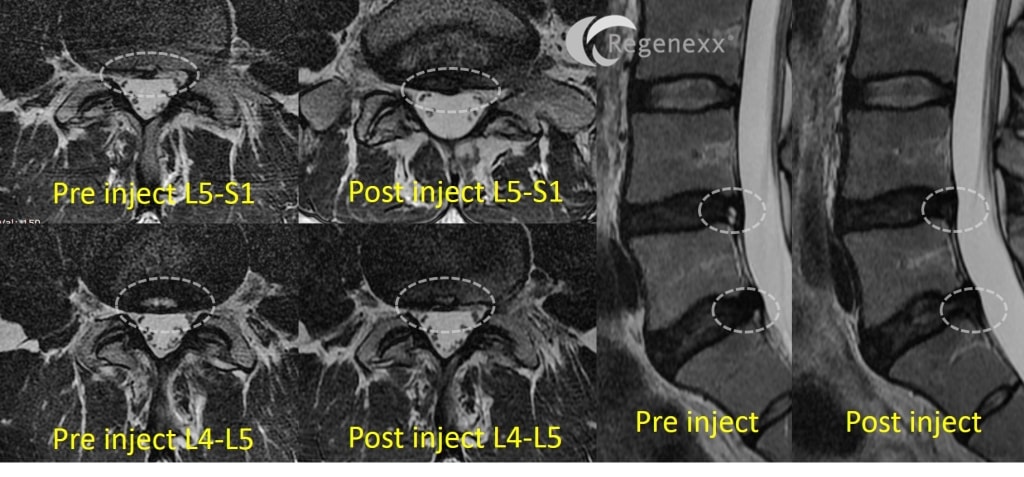Torn Disc Surgery Alternatives: Can You Heal Disc Tears?
Torn discs can be painful, but are often missed as a cause of pain, usually lumped with garden variety degenerative disc disease. Some of the patients with these tears that have chronic pain end up with surgical fusions. However, are there torn disc surgery alternatives? DA is a good example of how many different injection based treatments are often tried for this problem.
First, the discs in your low back act as shock absorbers between the back bones. They have a tough outer covering called the annulus and a softer gel like center called the nucleus. The annulus can get torn with wear and tear or trauma and nerves can grow into the tear, which can cause pain. Many times these painful tears will appear as a white spot in the otherwise dark disc on an MRI. These are called high intensity zones (HIZs).
DA is a 40 year old patient of Dr. Pitts with more severe spine problems that began with constant low back pain in October 2013. Before that, he had a seven to eight-year history of some mild low back pain radiating to the right buttock that was manageable. In October 2013, the pain worsened and became more constant. It moved to the middle of the low back , radiating to the sides and into the right buttock down the outside both legs and to the top of the foot where he had some numbness, tingling, and slight weakness. The pain was worse with bending forward to pick up things and aggravated by standing longer than thirty minutes. He had tried one-time facet steroid injections, which may have provided some help. He has also had epidural steroid injections, which didn’t help. He also had radiofrequency ablation in February of 2014 that did help for four to six weeks. He has had a discogram at the L4-L5 and L5-S1 levels with subsequent injection of the amniotic growth factors in May 2014. He feels that this helped somewhat as well. He had also tried chiropractic, acupuncture, and trigger point dry needling.
The patient traveled down to Grand Cayman to get specially culture expanded mesenchymal stem cells injected into his disc. Above are his pre stem cell injection MRI and his 6 month post films. Notice the white spots (HIZs or disc tears) in the back of the two bottom discs (L4-L5 and L5-S1 in the grey dashed circles). These either go away or are much less prominent in the 6 month post treatment images. He reports about 40-50% improvement and Dr. Pitts is considering treating those discs a second time.
The upshot? DA is a good example of what people can experience with disc tears. They often try and fail a number of treatments including facet injections and radiofrequency, epidurals, and physical therapy/chiropractic. Until recently, outside of a lumbar fusion, there wasn’t much to offer these patients. For the last decade at our clinic since we’ve used stem cell injections in the disc, we’ve had a few options to treat patients like DA!
The Regenexx-C procedure is not approved by the US FDA and is only offered in countries via license where culture expanded autologous cells are permitted via local regulations.

If you have questions or comments about this blog post, please email us at [email protected]
NOTE: This blog post provides general information to help the reader better understand regenerative medicine, musculoskeletal health, and related subjects. All content provided in this blog, website, or any linked materials, including text, graphics, images, patient profiles, outcomes, and information, are not intended and should not be considered or used as a substitute for medical advice, diagnosis, or treatment. Please always consult with a professional and certified healthcare provider to discuss if a treatment is right for you.

